-
Posts
231 -
Joined
-
Last visited
Content Type
Profiles
Forums
Blogs
Gallery
Events
Store
Posts posted by The Monkey God
-
-
Many thanks Paul.
 0
0 -
Hi Guys,
I have a Masonic Medal. Its engraved on the back...
Presented to Bro W C Grant C.P
March 20th 1929
For Services rendered to the Lonsdale Lodge No. 1115
On the front there is what appears to be a golden ram with the words Nemo Mortalium Omnibus Horis Sapit
I wonder if anyone can tell me what C.P stands for, is there a significance to the date, what the Latin means & what the medal is for, or indeed anything else that might be of interest.
I wonder if W C Grant served in the Great War?
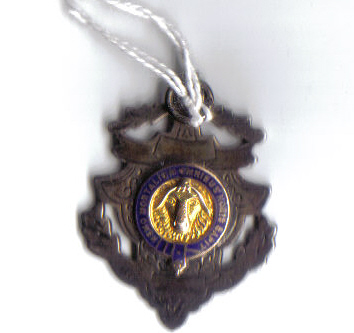 0
0 -
The United States the Army and Marine Corps banned beards on grounds of personal hygiene just before world war one but they are permitted for medical reasons, such as temporary skin irritations if needed. The US Navy allowed beards for centuries especially for submariners but consigned the practice to Davy Jones's locker in the 1970's. The US Coast Guard banned beards in 1986 however The Coast Guard Pipe Band allows retired and reserve members to have beards and appear in uniform (which includes a Kilt) while on service with that unit.
History, due to tactical reasons, is repeating itself in Afghanistan where the militaries of many of the world's armed forces hung up their razors again. Selected American and British ground units were permitted to grow full beards and have worn them off and on since 2002. Afghans equate beards with being a man and it was found that the local population took the soldiers more serious once they had grown them. This also permitted small units such as Special Forces recon teams and air control parties to blend in better among the local population. This is to remain the same as the armies of many moslem countries still maintain beards. When NATO reformed the Afghan National Army after 2002, the only two things that remained the same were the AK47s and, of course, the beards.
The more things change, the more they stay the same.
0 -
Hi Guys,
Don`t know if anyone has been watching `Combat School` on Sky. Basically its about a Canadian Regiment, and its pre-deployment training for Afghanistan. Its well worth watching, but the reason why I`ve brought it up is that there appears to be at least two guys within the Regiment that have full beards, which I found very interesting, does anyone know what the story is there......?
Gordon.
I know the Canadian Pioneers are REALLY keen on beards and in some cases, the whole Pioneer Platoon would be sporting them (often with shaved heads, like ZZ Top). In Cyprus you would see the canuck pioneers looking like Castro in their old OG uniforms before Cadpat. Growing one wasnt mandatory but you had to get permission to shave it off!
 0
0 -
Found this which might be of interest....................
The Decline of Beards in Warfare. Increasingly banned in modern combat a rebirth is underway.
The Beard went from being the nearly only universal item in every army to being prohibited nearly everywhere and is now making a resurgence.




The beard was, from the time of the caveman until recent memory, considered standard issue among soldiers throughout history. In modern combat the act of shaving was set aside mainly for gentleman officers and who more often than not shaved even their heads and eyebrows. One artillery unit of the 18th Century Austrian Army that was ordered not to grow facial hair was referred to by their emperor as "My Little Shavers" whenever they were mentioned. It is harder to find a picture of an American Civil War general without a beard than with one.
By the time of World War two military forces had mandated the prohibition of beards for reasons of uniformity, hygiene, discipline, or tactical demands (such as the proper fitting and seal of a gas mask)
Before 1939, British army troops were allowed, with permission from their commander, to grow a beard. Since then, the only soldier in the battalion allowed a beard was the combat engineer sergeant and colour sergeants who was allowed to keep a beard by tradition. In many British Commonwealth armies it is traditional that the Pioneer Sergeants attached to the infantry has a beard. This goes back to the days when they used to stick the slow burning fuze into their beards for safekeeping when assembling explosive charges. Today these men are responsible more for carpentry and military engineering than lighting fuses but the beards remain as a remnant of that past. Oddly enough these men also are usually issued chromed pioneer tools (axes, shovels, etc) and a work apron that they carry with them on parades. The navies of these countries also allow full sets of beards although currently this is under review.
The Israeli Defense Forces prohibit both beards and moustaches unless the member is an Orthodox Jew and is required by religious purposes to be unshaven. Having "unshorn" hair i.e. beard & mustache is an integral part of the Sikh religion. In the Sikh regiment & the Sikh light cavalry of the Indian army, as you might expect, soldiers are actually required to have beards & mustaches. Sikh servicemen in most western militaries are permitted to retain their beards while in military service.
The Spanish Legion (known until 1987 the Spanish Foreign Legion) allows beards to be grown and most of the men in that 10,000 man elite unit have them as a matter of honor. These men are known the world over for their easter march in Malaga Spain, called the Cofradía del Cristo de la Buena Muerte (Brotherhood of the Christ of the Good Death). These men carry a heavy crucifix in one hand while marching through town singing their hymnal Soy el Novio de la Muerte (I am the Groom of Death's)
 0
0 -
According to British and Commonwealth military traditions, the Pioneer Sergeant is the only soldier in the army who is allowed to wear a full beard. A Pioneer Sergeant can be identified by an embroidered badge of two crossed axes sewn above the Sergeant's rank chevrons on his sleeve.
0 -
Sure the Goat Major of the RWF has a beard. Also Pioneer/Farrier Sergeants in many/most regiments have a beard by tradition. Not sure what the origin is, but I think it was a Sudan-war era (British Army seems to have become beard-less in the 1870s) thing to do with battlefield identification - these guys were the ones carrying the axe with which to despatch injured horses and to cut off their right fore hoof (which was numbered) for accounting purposes.
Since WW1 until recently beards have been banned because of the - apparently - need to have a clean seal with a respirator.
I think the tradition of pioneers wearing beards dates back to when they had no time to shave in the morning as they had to leave camp before the rest of the battalion to clear the way for the day's march.
Not sure that this would apply to farriers who were essentially the head blacksmiths for cavalry: the axes carried are different, with pioneers carrying felling axes to clear trees and undergrowth and farriers' axes having a nasty point to kill injured horses and the blade being used, to remove a hoof to prove that the horse was dead.
Beards seem to have survived beyond the Crimea and a fair number were worn during the Zulu war, despite what you saw in the film.
0 -
Colour Sergeant in the Scots Guards has always had a beard.
Pioneer Sgts are generaly allowed to grow a full beard, some units actively encourage it. This is a traditional thing, but I'm not sure of its origins.
0 -
The Queen has approved the following battle honours for the Gulf war:
ARMY
Regiments and Corps awarded the theatre honour 'GULF 1991' with the right of emblazonment: The Life Guards; 1st The Queen's Dragoon Guards; The Royal Scots Dragoon Guards (Carabiniers and Greys); The Queen's Royal Irish Hussars; 14th/20th King's Hussars; 16th/5th The Queen's Royal Lancers; Grenadier Guards; Coldstream Guards; Scots Guards; The Royal Scots (The Royal Regiment); The Royal Regiment of Fusiliers; The Royal Highland Fusiliers (Princess Margaret's Own Glasgow and Ayrshire Regiment); The King's Own Scottish Borderers; The Staffordshire Regiment (The Prince of Wales's); Queen's Own Highlanders (Seaforth and Camerons); Special Air Service Regiment; Army Air Corps.
Regiments and Corps awarded the battle honour 'WADI AL BATIN': The Life Guards; 1st The Queen's Dragoon Guards; The Royal Scots Dragoon Guards (Carabiniers and Greys); The Queen's Royal Irish Hussars; 14th/20th King's Hussars; 16th/5th The Queen's Royal Lancers; Grenadier Guards; The Royal Scots (The Royal Regiment); The Royal Regiment of Fusiliers; The Staffordshire Regiment (The Prince of Wales's); Army Air Corps.
Regiment awarded the battle honour 'WESTERN IRAQ': Special Air Service Regiment.
ROYAL AIR FORCE
Squadrons awarded the battle honour 'GULF 1991' with the right of emblazonment: Number 1 Squadron RAF Regiment - Scorpion/Spartan; Number 2 Squadron - Tornado GR1a; Number 6 Squadron - Jaguar; Number 7 Squadron - Chinook; Number 9 Squadron - Tornado GR1; Number 12 Squadron - Buccaneer; Number 13 Squadron - Tornado GR1a; Number 14 Squadron - Tornado GR1; Number 15 Squadron - Tornado GR1; Number 16 Squadron - Tornado GR1; Number 17 Squadron - Tornado GR1; Number 18 Squadron - Chinook/Puma; Number 20 Squadron - Tornado GR1; Number 27 Squadron - Tornado GR1; Number 31 Squadron - Tornado GR1; Number 33 Squadron - Puma; Number 41 Squadron - Jaguar; Number 54 Squadron - Jaguar; Number 208 Squadron - Buccaneer; Number 230 Squadron - Puma; Number 617 Squadron - Tornado GR1.
Squadrons awarded the battle honour 'GULF 1991' without the right of emblazonment: Number 10 Squadron - VC10; Number 20 Squadron RAF Regiment - Rapier; Number 24 Squadron - Hercules; Number 26 Squadron RAF Regiment - Rapier; Number 29 Squadron - Tornado F3; Number 30 Squadron - Hercules; Number 32 Squadron - HS125; Number 34 Squadron RAF Regiment - Ground Defence; Number 42 Squadron - Nimrod; Number 43 Squadron - Tornado F3; Number 47 Squadron - Hercules; Number 51 Squadron - Nimrod; Number 51 Squadron RAF Regiment - Ground Defence; Number 55 Squadron - Victor; Number 58 Squadron RAF Regiment - Ground Defence; Number 66 Squadron RAF Regiment - Rapier; Number 70 Squadron - Hercules; Number 101 Squadron - VC10; Number 120 Squadron - Nimrod; Number 201 Squadron - Nimrod; Number 206 Squadron - Nimrod; Number 216 Squadron - Tristar.
Falkland Islands
battle honours
The Queen has approved the following retrospective battle honour for the Falklands campaign:
Corps awarded the battle honour 'FALKLAND ISLANDS 1982': Army Air Corps.
Regards Eddie
Cheers Eddie, however, I don`t think I worded my question very well, I was wondering whether any battle honours have been awarded for post 2003 Iraq & 2001 Afghanistan. But was very interested to see the AAC got a battle honour, I didn`t think corps got them?
0 -
Thanks for the reply Tony!!!!

 0
0 -
Have any British units, been awarded battle honours for post invasion Iraq or indeed Afghanistan?
0 -
Each DCM award brought a gratuity.............
Can one tell me how much this gratuity was, and whether if a bar was awarded, was another gratuity?
0 -
Just out of interest do gallantry medals to the LRDG have LRDG as the unit, or are they named to the parent unit of the winner?
0 -
There seems to be a distinct lake of information regarding casualties for the pre WW2 campaign, one can only assume that it was bloodless. Which certainly wasn`t the case with the post war campaign!!!
 0
0 -
No, this is Thai.
This is a Five Baht Coin (Baht 5).
Obverse : H.M. King Bhumibol Adulyadej
Reverse: The Marble Temple - WAT BENCHAMABOPHIT
Ch.
Thanks Chris, bit disapointed its not a Marcos coin, but oh well. Just out of interest did Thes Marcos`s mint any coins with their imagaine on?
 0
0 -
Lieutenant Colonel Sir Ernest Edward "Weary" Dunlop, AC, CMG, OBE
Was a Doctor who was captured by the Japanese. His conduct during his time as a POW made him a national hero.
http://en.wikipedia....i/Edward_Dunlop
How interesting, thank you.
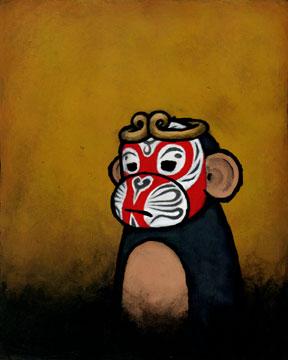 0
0 -
Surely it couldn`t be as bad as 1977!!! Could it.......
Come to think of it the Golden Jubilee was a bit a lucky dip to as to who got it and who didn`t.
Will certainly be interesting to see what if anything is forth coming.
 0
0 -
Hi Guys,
Heres another interesting one, not sure where its from, but think it might be Ferdinand Marcos?
Can anyone confirm or deny this for me?
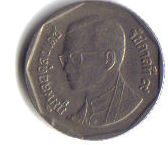
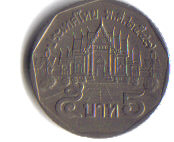 0
0 -
Hi Guys,
Can anyone tell me who Weary Dunlop was?
The coin appears to be a 50p type coin, on the front it has E11R on the back it has `They served their country in World War II 1939-45 & a picture of a guy called Weary Dunlop....
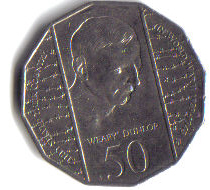 0
0 -
It's British, non RAMC Medical Assistant, introduced 1962, there's a metal version wth "First Aid Instructor" scoll,
 Many thanks Leigh
Many thanks Leigh 0
0 -
Didnt the canadians have such round sleeve badges in the 50s?
Thanks Chris. Would this have been the CAMC personel or anyone who`d recieved medical training?
 0
0 -
Hi Chaps,
Can anyone tell me what this badge is for. I assume its got something to do with the RAMC, or is it a trade badge for none RAMC personel. Also does anyone know what period its from?

 0
0 -
There seems to be very limited information on the net about Cleopatra coins, except values, which as one would expect varie wildly depending on the condition. There is however, loads of threads concerning whether she was `fit` or not.
I can only say that if she looked anything like this, well she gets my vote!!!

 0
0 -
And this.........
Dig 'may reveal' Cleopatra's tomb
<P class=first>Archaeologists are to search three sites in Egypt that they say may contain the tomb of doomed lovers Anthony and Cleopatra. Excavation at the sites, which are near a temple west of the coastal city of Alexandria, is due to begin next week.
Teams working in the area said the recent discovery of tombs containing 10 mummies suggested that Anthony and Cleopatra might be buried close by.
The teams also found a bust of Cleopatra and coins carrying her image.
The archaeologists from Egypt and the Dominican Republic have been excavating at the temple of Taposiris Magna for the last three years.
'Charm'
There they discovered a series of deep shafts in which it is thought that Anthony and Cleopatra might be buried, Egypt's Supreme Council of Antiquities said in a statement.
Alongside the coins and bust of Cleopatra, a mask believed to belong to Mark Anthony was also found.
The temple was built during the reign of King Ptolemy II (282-246BC).
Anthony and Cleopatra committed suicide in 30BC after losing the Battle of Actium.
Zahi Hawass, Egypt's chief archaeologist, said the coins found at the temple refuted "what some scholars have said about Cleopatra being very ugly".
"The finds from Taposiris reflect a charm... and indicate that Cleopatra was in no way unattractive," he said.
A team of experts from Newcastle University said two years ago that another set of coins showed the beauty of Anthony and Cleopatra portrayed in popular culture to have been exaggerated.
 0
0




Identify a Masonic Medal
in Masonic Medals & Jewels
Posted
Hi ladybird,
Thanks for your reply. To be honest I bought the medal in an auction, thinking it was Masonic, when I discovered it was RAOB, I put it back in the auction as RAOB items aren`t really my collecting bug.
To be honest I bought the medal in an auction, thinking it was Masonic, when I discovered it was RAOB, I put it back in the auction as RAOB items aren`t really my collecting bug.